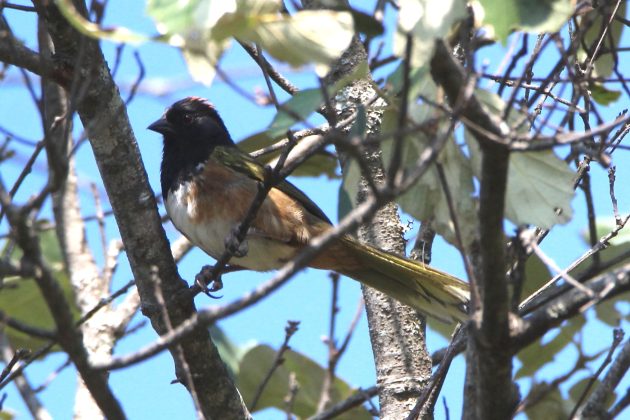If you may have birded very long, you’re probably aware that members of closely related bird species, when their ranges overlap, sometimes love one another very much, and have babies. Some even do that so often that images of their hybrids might be included in bird guidebooks. When this happens particularly often, such hybridization processes can lead to entirely latest species.
Here in central Mexico, we’ve one such case that’s so notable that it has been the topic of a superb deal of scientific study. One recent article, “Hybrid zone or hybrid lineage”, refers to the problem in its subtitle as “Sibley’s classic species conundrum in hybrid Pipilo towhees”. The conundrum in query is the affirmation by the ornithologist Charles G. Sibley, way back in 1950, that each one Spotted Towhees in western central Mexico are the product of a hybridization gradient between the southwestern Collared Towhee, Pipilo ocai, and the eastern Mexican race of the true Spotted Towhee, Pipilo maculatus. (Back then, Sibley used the name “Red-eyed Towhee” for what we call Spotted Towhees today.)
I even have, unfortunately, not yet seen a Collared Towhee, although they supposedly occur in my neck of the woods. Fortunately, I even have great birder friends; these implausible photos are by Alberto Lobato and René Valdez. Note the white throat patch above a black collar, the orange mohawk crown, the olive back, and the one barely dusky flanks.

In contrast, the classic Spotted Towhee of the western U.S. and eastern Mexico has an all-black head, a black back with shiny white spots, and orange flanks. This image is mine, from the central Californian coast.

Our local variant of the Spotted Towhee, currently called the (Olive-backed) Spotted Towhee, looks different than each. But upon studying the above photos of Collared Towhees, I can see that Sibley might have been right. Our birds have the black head and reddish flanks of the classic Spotted Towhee, and the spotless olive back of the Collared Towhee. So are they a subspecies, or a hybrid intergrade?

To make things much more complicated, our possibly hybrid Olive-backed Spotted Towhees can hybridize even further with the Collared Towhee. Until recently, I had only seen just a few examples of this. All were distinguished by the subtle differences of a more greenish back of the pinnacle, barely lighter flanks, and a touch of the Collared Towhee’s reddish crown.



The reason I’m writing about this subject now, is that just this week I finally saw my personal holy grail of hybrid towhees. The lighting didn’t allow me to see the colour of this bird’s crown. And it never did give us the total-frontal view that will have been so helpful. But my few photos left little question; this bird had a black color, a white throat patch, and just a touch of a white line above the eyes. This was a transparent hybrid Pipilo maculatus x ocai. In fact, if Sibley’s theory from way back is correct, this bird could well be called a hybrid hybrid.

I should probably add a private confession at the top of this post. Twice, in 2019 and 2022, I complained on this site about having to make use of the name Spotted Towhee for our locally spotless birds. I even have even begged, with no scientific basis, for a taxonomic split, in the event that they wouldn’t change that name. I even have accused bird-namers of being biased to their United States experience of birds. (Admittedly, that continues to be true for the Summer Tanager, which we only see here within the winter.) But my research for this post has shown me that this problem could also be way more complicated. In fact, for those who move east from Morelia towards lands occupied by traditional Spotted Towhees in eastern Mexico, you’ll apparently find Olive-backed Spotted Towhees very just like mine… but with light spots on their wings, growing ever clearer as you progress towards the rising sun.
I humble myself before the complexities of the natural world.